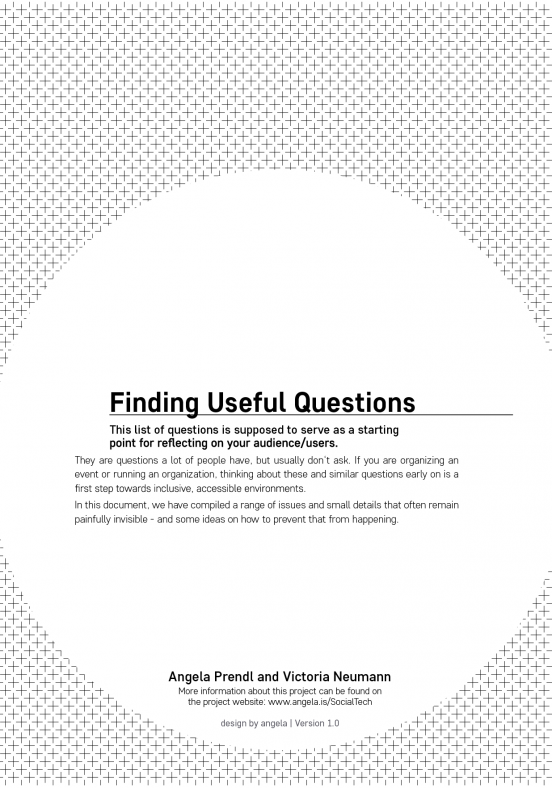Accessibility is a social issue that is often framed in technical terms. Rather than separating accessibility, diversity and inclusion, we want to think them as interconnected aspects of human interaction.
“Finding Useful Questions” is an annotated list of questions a lot of people would like answers to, but often don‘t get to ask for a variety of reasons. It is supposed to serve as an entry point to facilitate inclusive and accessible interactions, events, and everyday communications.
When I was a full-time master’s student, I used to co-organize the Changing Worlds Conference, a transdisciplinary student-led conference. We spent 3 years exploring the possibilities to bring together artists, scientist, engineers, activists, students and teachers interested in science, technology and society within the framework of an academic conference.
For me personally, the most interesting aspect of the project was experimenting with the format of the conference itself. We were trying (and mostly succeeding) to create an accessible, inclusive environment in which people from different backgrounds feel welcome and can productively work together. But even after that project ended, one question kept popping up: Accessibility sounds great, but where do I start?
Together with my colleagues Victoria Neumann and Alex Steiner, I have been working towards answering this question for and with others. We want to show you that there are many small, doable actions everyone can take to invite more people in. A big part of doing that is making the invisible visible, and we want to facilitate that by helping you to ask yourself the right questions. Because often asking the right questions is much harder than finding good answers
The experiment is growing up
SocialTech, and it aims to provide a resource to learn about access needs, and more inclusive communication- and organizing strategies. Updates as the project unfolds can also be found on this project website.
The idea behind the project:
Rather than giving a specific set of instructions, the resource is built in a question-and-response format. There are no “one size fits all” solutions to dealing with people’s needs, but in this list we tried to provide a range of questions you could use as a starting point to consider your audience and how to make your space as accomodating and comfortable as possible.
We have published the first version of the document we are working on. It is a work in progress. For this first version, we have focused on a few topics that come up often. At the moment it is only available in English, but we are planning to translate it into German soon.



